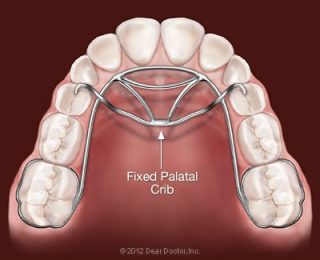Early and regular dental visit is essential in helping to maintain a child’s oral hygiene and promoting a good occlusion into adulthood. Some bad tooth alignment that is seen in some adults could have been better managed during childhood. In Nigeria, most pediatric visit starts at the age of 7-9 years and even at that more than 50% of children within that age group may not visit the dental clinic. Most pediatric visit is due to pain and when there is a need to wear an appliance, some parents are reluctant for various reasons; financial, cultural, psychosocial etc.
It is important for parents to understand that wearing of appliance in children is safe and may be necessary for both preventive and treatment purposes. Many children with persistent tongue or thumb sucking habits can be treated with appliances if behavioral management seems unhelpful. Appliances can also be worn to prevent misalignment of tooth, proper tooth eruption as well as helping to replace early loss of tooth in children.
It can be extremely difficult to encourage young children to wear removable dental appliances regularly. Pediatric dental appliances can prevent injury to the teeth and may also reduce (or even eliminate) the need for extensive treatment later.
TYPES OF COMMON PEDIATRIC DENTAL APPLIANCE
There are many types of pediatric dental appliances that can be recommended for various purposes. The major categories of pediatric dental appliance are as follows:
- Space Maintainers – Sometimes, primary (baby) teeth are lost prematurely due to trauma or decay. Adjacent teeth tend to shift to fill the space, causing spacing and alignment problems for permanent (adult) teeth. Space maintainers are inserted as placeholders until the permanent teeth are ready to erupt. Depending on the position of the missing tooth and the condition of the surrounding teeth, the dentist may prescribe a band and loop, a crown and loop, a distal shoe or a lower lingual arch type of space maintainer to fill the empty gap. All spacer maintainers have similar function; however, the nature of the attachment to the adjacent teeth differs. Fixed space maintainers are usually made of metal and are highly durable, while removable ones are rarely used with young children.
- Mouth Guards – The Nigeria Dental Association (NDA) recommends that children wear mouth guards when engaging in any potentially injurious activity, including sporting and recreational endeavors. The pediatric dentist can fabricate a customized mouth guard for the child, or a thermoplastic “boil-and-bite” mouth guard can be purchased. Similar mouth guards are used for children who grind their teeth at night, a condition known as bruxism.
- Sucking Appliances – Children tends to have various habits, namely; thumb sucking, finger sucking, tongue sucking, tongue thrusting, lip sucking etc. Naturally, majority of children tend to outgrow their habit. However, children who continue to have habit after the age of 5 or 6 years risk oral complications such as; narrowed arches, impacted teeth, and misaligned teeth. Appliances such as goal post, palatal crib or rake, tongue crib, modified quad helix etc., can be used to correct various habits in children.
Other appliances include Expansion appliances used to widen the jaw arch in order to accommodate erupting tooth especially in children who have cleft palate, Bionator used for children in which their upper or lower jaws is proportionately smaller, Retractors used to correct misalignment and Retainers used to maintain tooth alignment.
CONCLUSION
Pediatric dental appliances are safe and may be necessary to prevent teeth misalignment in children as well as reduce cost of treatments in the future
